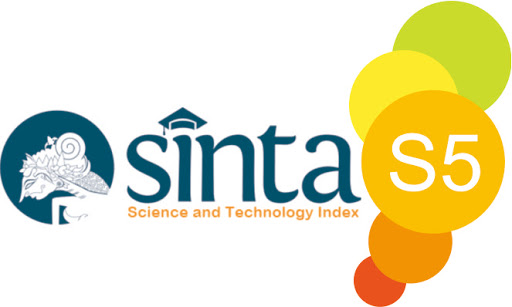The Construction of Oven Designed by Heat Exchanger in Drying Porang at SME Coco Prima
DOI:
https://doi.org/10.32734/abdimastalenta.v4i2.3549Keywords:
Heat exchanger, oven, iles-iles, porangAbstract
The small-medium enterprise (SME) Coco Prima has been under nurtured of LPPM USU since 2018. Ever since, it has been improving its productivity and diversifying its productivity into drying products. Currently, this SME manages porang as one of new export commodity. The problem faced by partners is a large and fast drying methodology. Porang or iles-iles are rotten raw materials that only last for three days after harvesting due to the unpleasant odors resulted more than three days, and subsequently, they cannot be processed. Drying under sunlight requires to four days reaching about 70% degree of dryness. Due to unfavorable weather conditions, the raw material becomes sweaty and moldy and produces black colour and soft textures. Therefore, a 3x3x2 cubic meter of drying oven has been constructed along with shelves and heat exchanges supported by liquid petroleum gas (LPG) gas. The heat exchange is designed accordingly to provide lower temperature in the oven, so that the air pressure within it is more efficient and less heat is wasted during reheating process. The heating is sufficient by using LPG and fan 18’. The oven is consisted of two layers in which between the layers are given glass wool as a heat barrier to the environment. It is also designed with a small vent exactly on the middle of the top with the intention to flow water vapour out from the vent, while the cold air is touched by that water vapour in the oven, it converts downward on the heat exchanger repeatedly. From this applied system, 750 kg iles-iles was heated within two days with a tube-of-12 kg LPG gas.
Downloads
Downloads
Published
Issue
Section
License
The Authors submitting a manuscript do so on the understanding that if accepted for publication, copyright of the article shall be assigned to Jurnal Abdimas TALENTA as well as TALENTA Publisher Universitas Sumatera Utara as the publisher of the journal.
Copyright encompasses exclusive rights to reproduce and deliver the article in all forms and media. The reproduction of any part of this journal, its storage in databases and its transmission by any form or media, will be allowed only with written permission from Jurnal Abdimas TALENTA.
The Copyright Transfer Form can be downloaded here.
The copyright form should be signed originally and sent to the Editorial Office in the form of original mail or scanned document.












